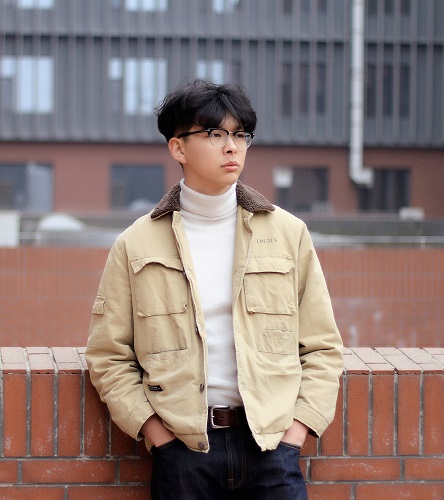“Mortise and Tenon Joint” Wisdom of Ancient China Appeared at SaloneSatellite
At the SaloneSatellite, the young student designer Zhong Haoxuan from Beijing University of Technology College of Art and Design appeared with his work Patting Stool and won the second prize of SaloneSatellite.
In ancient China, creativity and inventions are never exhausted, and the emergence of the four great inventions has promoted the politic, economic and cultural development in ancient China. In China with rapid development of modern civilization, we have got used to living in a bright environment with electricity in 24 hours, relying on the industrial machines replacing of traditional handwork and enjoying the convenience brought by the rapid development of high technology that we can know everything without going out and we can taste all the delicious food in the world without going abroad. Then, does the ancients’ wisdom have no chance to play in modern civilization?
At least in the household industry, it does not exist.
At the SaloneSatellite, the young student designer Zhong Haoxuan from Beijing University of Technology College of Art and Design appeared with his work Patting Stool and won the second prize of SaloneSatellite.

Zhong Haoxuan, life photo
JJGLE.COM has the honor to interview this young designer.
The design concept is from the Chinese traditional “Kongming Lock” and the study of the force, automatic lock , dismantling of the tenon, which inherits and carries forward the core value of the structure of the traditional tenon. The highlight of the design is “no standing without being seated”, that is to say, naturally, the stool is the loose structure. Only if being seated, can the stool be extremely firm. The stool includes 3legs、3 ropes and 2 round boards. It can be easily assembled without any aid of assisting tool, which means the low cost of machining, transport and appliance.

Kong Ming Lock- Mortise and tenon joint structure- Patting Stool
There is no doubt that wisdom of the ancient Chinese has been followed and inherited in the new era when such feature is applied in the chair design.
JJGLE.COM: How does the principle of Kong Ming Lock is reflected in the work design? In the design process, what was the greatest difficulty encountered?
Zhong Haoxuan:Kong Ming Lock was the project I researched at the very beginning. Certainly, wisdom of Chinese mortise and tenon joint reflected behind it – self-locking – can be reflected in the interaction way of Patting Stool because Patting Stool itself is a loose structure at the unrestrained state and the whole stool will generate self-locking due to the downward applied force generated by weight of the person in interaction with stool, and it will not be erect without sitting.
The biggest problem in design was how to convey the ancients’ wisdom with the modern expressing method; in other words, I considered how to enable the Chinese traditional culture to have the new era features in this design.

Patting Stool
JJGLE.COM: As a Chinese designer in furniture, what do you value most?
Zhong Haoxuan:I personally value the design expressing idea in the “non-mapping” way most.
JJGLE:COM: Can you simply describe the home decoration environment your style of works is most suitable for? In the future, what breakthrough will you have in modeling and materials?
Zhong Haoxuan:The style of Patting Stool is more inclined to the style of Northern Europe. Just as the all-inclusive Chinese culture, Patting Stool can also adapt to Northern European, modern, Japanese and other multiple styles. The future is full of possibilities. I will follow the principle of “form determined by function” in case of no specific requirement, so the modeling will change according to the functions of products as well and materials will be chosen according to different structures.
(Source: JJGLE.COM)

 沪公网安备31010402003309号
沪公网安备31010402003309号



